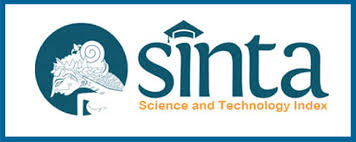Definision And The Most Active Severe Acute Respiratory Syndrome Coronavirus 2 Atau Covid 19
DOI:
https://doi.org/10.31290/jpk.v9i1.1513Keywords:
Severe Acute Respiratory Syndrome Coronavirus 2 (SARS CoV-2), COVID-19, Transmission, reviewAbstract
Since it was first reported at the end of 2019 Severe Acute Respiratory Syndrome Coronavirus 2 or SARS CoV 2 or COVID 19 has infected more than 2 million people in just under 5 months worldwide. Based on the above data the author will make a review and explain the definitions and also various routes of transmission of infection based on evidence that has been published and summarized. The review was carried out in April 2020, by searching the article through an online database and keywords Review AND COVID 19 OR Severe Acute Respiratory Syndrome Coronavirus 2 AND Review OR Coronavirus Disease 2019 AND Review AND transmission route. SARS CoV 2 or COVID 19 is a virus of the type of beta coronavirus with a higher transmission rate than SAR CoV or MERS. The most active human to human transmission pathway is through close contact with droplets and aerosols, although the virus is still present in feces, tears and urine. But the potential for transmission still needs to be studied. The incubation period of the virus is 0 until 24 days with an average of the first symptoms until death is 3 until 14 days.
References
Chen, H. et al. (2020) ‘Clinical characteristics and intrauterine vertical transmission potential of COVID-19 infection in nine pregnant women: a retrospective review of medical records’, The Lancet. Elsevier Ltd, 395(10226), pp. 809–815.
Donders, G. G., Zodzika, J. dan Rezeberga, D. (2014) ‘Treatment of bacterial vaginosis: What we have and what we miss’, Expert Opinion on Pharmacotherapy, 15(5), pp. 645–657.
Guan W, Ni Z, Hu Y, Liang W, He J, et al. 2020. Clinical characteristics of 2019 novel coronavirus infection in China.
Hoffmann M, Kleine-Weber H, Krüger N, Müller M, Drosten C, Pöhlmann S. 2020. The novel coronavirus 2019 (2019-nCoV) uses the SARS-coronavirus receptor ACE2 and the cellular protease TMPRSS2 for entry into target cells. bioRxiv.
Ji, W. et al. (2020) ‘Homologous recombination within the spike glycoprotein of the newly identified coronavirus may boost cross-species transmission from snake to human.’, Journal of medical virology.
Liu Y, Gayle AA, Wilder-Smith A, Rocklov J. 2020. The reproductive number of COVID-19 is higher compared to SARS coronavirus. J Travel Med.
Rothe C, Schunk M, Sothmann P. 2020. Transmission of 2019- nCoV infection from an asymptomatic contact in Germany. N Engl J Med ;382:970-1.
Sahu, K. K., Mishra, A. K. and Lal, A. (2020) ‘COVID-2019: update on epidemiology, disease spread and management’, 90. Monaldi Archives for Chest Disease. volume 90:1292
Sahu KK, Mishra AK, Lal A. 2020. Latest updates on COVID-2019: A changing paradigm shift. J Med Virol.
Susilo, A. Rumende M. Pitoyo C W. Santoso W D. Yulianti M. Herikurniawan Robert Sinto1 et al. (2020) ‘Coronavirus Disease 2019?: Tinjauan Literatur Terkini Coronavirus Disease 2019?: Review of Current Literatures’, Jurnal Penyakit Dalam Indonesia, 7(1), pp. 45–67.
Simmons G, Reeves JD, Rennekamp AJ, Amberg SM, Piefer AJ, Bates P 2004. Characterization of severe acute respiratory syndrome-associated coronavirus (SARS-CoV) spike glycoprotein-mediated viral entry. Proc Natl Acad Sci USA.
Wang, L. et al. (2020) ‘A review of the 2019 Novel Coronavirus (COVID-19) based on current evidence’, International Journal of Antimicrobial Agents. Elsevier B.V., p. 105948.
Wang W, Tang J, Wei F. 2020. Updated understanding of the outbreak of 2019 novel coronavirus (2019-nCoV) in Wuhan, China. Journal of medical virology.
Wang J, Zhao S, Liu M, Zhao Z, Xu Y, Wang P, et al. 2020. ACE2 expression by colonic epithelial cells is associated with viral infection, immunity and energy metabolism.
Wu A, Peng Y, Huang B, Ding X, Wang X, Niu P, et al. 2020. Genome Composition and Divergence of the Novel Coronavirus (2019-nCoV) Originating in China. Cell host & microbe.
Wrapp D, Wang N, Corbett KS, Goldsmith JA, Hsieh CL, Abiona O, et al. Cryo-EM structure of the 2019-nCoV spike in the prefusion conformation. Science (New York, NY). 2020.
Xiao F, Tang M, Zheng X, Li C, He J, Hong Z, et al. 2020. Evidence for gastrointestinal infection of SARS-CoV-2. medRxiv.
Xia J, Tong J, Liu M, Shen Y, Guo D. 2020. Evaluation of coronavirus in tears and conjunctival secretions of patients with SARS-CoV-2 infection. Journal of medical virology.
Xu X, Chen P, Wang J, Feng J, Zhou H, Li X, et al. 2020. Evolution of the novel coronavirus from the ongoing Wuhan outbreak and modeling of its spike protein for risk of human transmission. Sci China Life Sci.
Zhang H, Penninger JM, Li Y, Zhong N, Slutsky AS. 2020. Angiotensinconverting enzyme 2 (ACE2) as a SARS-CoV-2 receptor: molecular mechanisms and potential therapeutic target. Intensive Care Med.





